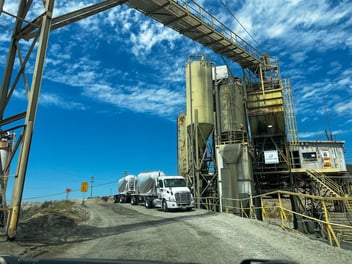The importance of data analytics in construction
It feels like every week there’s a new story on the news about how technology is advancing a certain process. Still, the construction industry is relying on old methods to invoice, keep track of their workforce, and schedule. This is where data analytics for the construction industry comes in.
Data analytics can save you a lot of money, headaches, and time in the future. In this piece, we’ll explore the importance of data analytics and how it can help your construction company. By the end, you’ll have a list of actionable items for implementation.
What are data analytics?
Data analytics involves using software and data to systematically evaluate patterns and generate meaningful insights. Construction companies employ data analysis to improve their operations and achieve better results.
There are two essential requirements for effective data analytics in any industry:
- Quality, accessible data.
- The ability to draw meaningful insights from your data.
We’ll speak more about exactly how you can achieve these two prerequisites, but first, more on why you should care about them at all:
Why use data analytics in construction?
Many successful construction companies have been doing things the same way for decades. Considering the headache that operational changes typically involve, it’s understandable to question what the upside is to shaking up the status quo.
There’s a strong argument for embracing data and the insights you can gain from it. Here are just a few benefits to leveraging your operational information:
Speed up operations
If you’ve ever had a gut feeling that your operations could be running more efficiently, but weren’t sure of the areas that were causing the largest inefficiencies, a lack of data analysis was likely the culprit.
Proper reporting surfaces areas of inefficiencies, such as subcontractors that are repeatedly behind schedule, or truck idle time, and can help you identify the areas where taking action can make the largest impact on your operational efficiency
Find out where you’re losing money
You wouldn’t dream of running a business without an accounting system— it’s essential for tracking business finances. But a software that can help you identify areas of your business where you’re leaving money on the table is ten fold more impactful.
By tracking real-time financial data, monitoring operational patterns, and having reports automatically generated, project managers can see exactly where they can save money.
With construction analytics, you can break down the costs for each job and determine the profitability. You can drill into which of your subcontractors provide the most accurate bids and which make you the most money. You can also pinpoint where and why jobs ran into issues.
This information helps you understand where to implement charge backs and more importantly, how to minimize costs and improve profitability on future jobs.
Improve accuracy
The best data analytics software helps to remove human error in data collection. When a process is run by people, it’s only a matter of time before a mistake happens. Sometimes the mistake is little and forgettable, but other times your company can be on the hook for a lot of money and wasted time.
When timesheets, site reports, delivery receipts, and other key information is recorded manually, human error and unstructured data can wreak havoc on the reliability of your information.
Automating data collection and reporting processes means that your data is higher-quality, more comprehensive, and more available. With better data, you can generate more actionable insights and avoid misinformed decisions.
Advance safety measures
Site safety is a key component of success for every construction company. Beyond the incalculable human cost, workplace accidents can result in labor shortages, liability, and a tarnished reputation.
Real-time data analytics enables you to identify safety issues and high-risk patterns or behavior before accidents happen. For example, reporting on necessary preventative maintenance for construction fleets minimizes the risk of breakdowns or equipment malfunctions.
As they say, what gets measured gets managed. When you measure and analyze the data that impacts safety, you have the ability to make a massive impact to future outcomes.
Beat your competitors
With a faster, more profitable, more accurate, and safer business, you’re set to beat your competitors. Data analytics is a tested way to get ahead of people who are relying on physical record keeping, scheduling, and invoicing.
Using data from past projects to predict the costs and risks of new bids will help you submit the most accurate and competitive proposals. Because you’ve relied on insights from your data to develop your rates, you will minimize your risk and enter the tender and negotiations confidently.
Employing data analytics in your construction business is similar to using a super calculator in an industry where everyone does the math on paper.
Getting meaningful insights with construction data analytics
It should be clear now that using data analytics in your business can help you in major ways. But how can you get the most out of analytics? Here are a few key ways to implement data analytics in your construction business:
Driver management analytics
Whenever there is heavy equipment involved, hourly payments usually come into play. To keep everything above board and honest, many companies elect to use driver management software.
This software tracks all dispatched activities and ensures the vehicles are in the right places at the right times. Driver management software also dramatically helps with order accuracy; the software will keep track of where the heavy equipment needs to go and the expected arrival time of each driver.
If you’re working with high-risk materials (like contaminated soil), then you want all construction teams to have insight. Driver management software will track these materials and enable everyone involved to analyze location and risks.
With real-time reporting in the cloud, every stakeholder can access information on driver location and estimated arrival time. This helps ensure that job sites run efficiently and avoid material delivery delays or unnecessary traffic congestion. It also assists management in analyzing the efficiency of jobs; driver and job cycle times and external factors such as traffic delays can be assessed and adjustments can be made for operational efficiency based on these insights.
This benefit of data analytics is essential for construction companies that have to juggle numerous deliveries across multiple projects.
Billing analytics
When you look at the best practices of billing in construction, billing software is always at the top of the list. Why? It makes everything faster, easier, and more accurate.
The best billing software goes beyond invoice management and helps you fully integrate timesheets and job data for a full picture of your payables and receivables. An integrated system that enables billing analytics can help you identify duplicate invoices or job tickets and flag potential fraud as well as resolve payment disputes with indisputable data.
With effective billing data management and analytics, you have more efficient accounting systems, which help you get paid faster and earn trust with subcontractors.
Subcontractor performance analytics
Working with subcontractors is a table stake of construction business operations. But leveraging external, specialized labor comes with unique challenges. There can be information and data gaps when working with subcontractors, such as hindered visibility into their activities on the clock.
Working with software that collects information on subcontractor activities and enables you to analyze that data can ensure your subs are indisputably doing what they say they will and that you’re getting what you pay for.
For example, Tread’s software has a built-in e-ticketing program that records job details automatically to eliminate disputes on what was or wasn’t done. Tickets are automatically uploaded for your project teams to see and invoices are created automatically. It also involves DoT to ensure there’s no grey area with compliance.
Schedule analysis and optimization
Construction sites are notoriously busy. Scheduling labor and materials can resemble a sadistic game of tetris. Thankfully, construction data analytics tools can help make this dreaded task a lot less painless.
By collecting data on equipment and personnel locations and activities, you can employ reporting and analysis to gain valuable insights on peak site traffic windows and also identify opportunities in individual’s schedules to increase efficiency.
For example, Tread’s construction fleet management software features a schedule optimizer module which identifies backhauling opportunities for drivers. This can improve performance and return on hauling spend by up to 15%. The site traffic report analyzes project data to illuminate trends in on-site traffic. This enables you to update schedules to mitigate congestion and make future schedules more efficient.
Getting quality data by going paperless
The power and incentive of data analytics in construction is clear. But achieving meaningful insights starts with having quality data.
Over the past decade the construction industry has witnessed a surge in paperless operations. Removing dated, paper-based practices from your operations is a cornerstone of improving your document management but it’s also essential to defend your traction in the industry and keep up with the competition.
Going paperless means that you can automate data collection, eliminating human error and making essential information available to key personnel at pivotal times. Paperless processes ensure information isn’t lost between the carseats or in the back of the file cabinet and ensures you have the best information available for analysis and decision making.
Making the transition to paperless is important for more than the data analysis that it enables; it’s key to your business growth and profitability.
Tread for paperless operations and data analysis
Tread enables construction companies to gather and analyze operational information to save 30% on dispatching time and costs.
Request a demo today to fully understand how Tread’s technology can leverage data to improve your bottom line
Read On

How to Use the Critical Path Method in Construction
Most construction projects are very complex, with many overlapping and connecting tasks. It is...

Construction billing methods & best practices
The construction industry is notorious for slow payments, costly overhead, and relying on credit to...

Five steps to moving forward along the road to digitalization
True digital transformation is a long-term commitment that affects every business sector: from...
